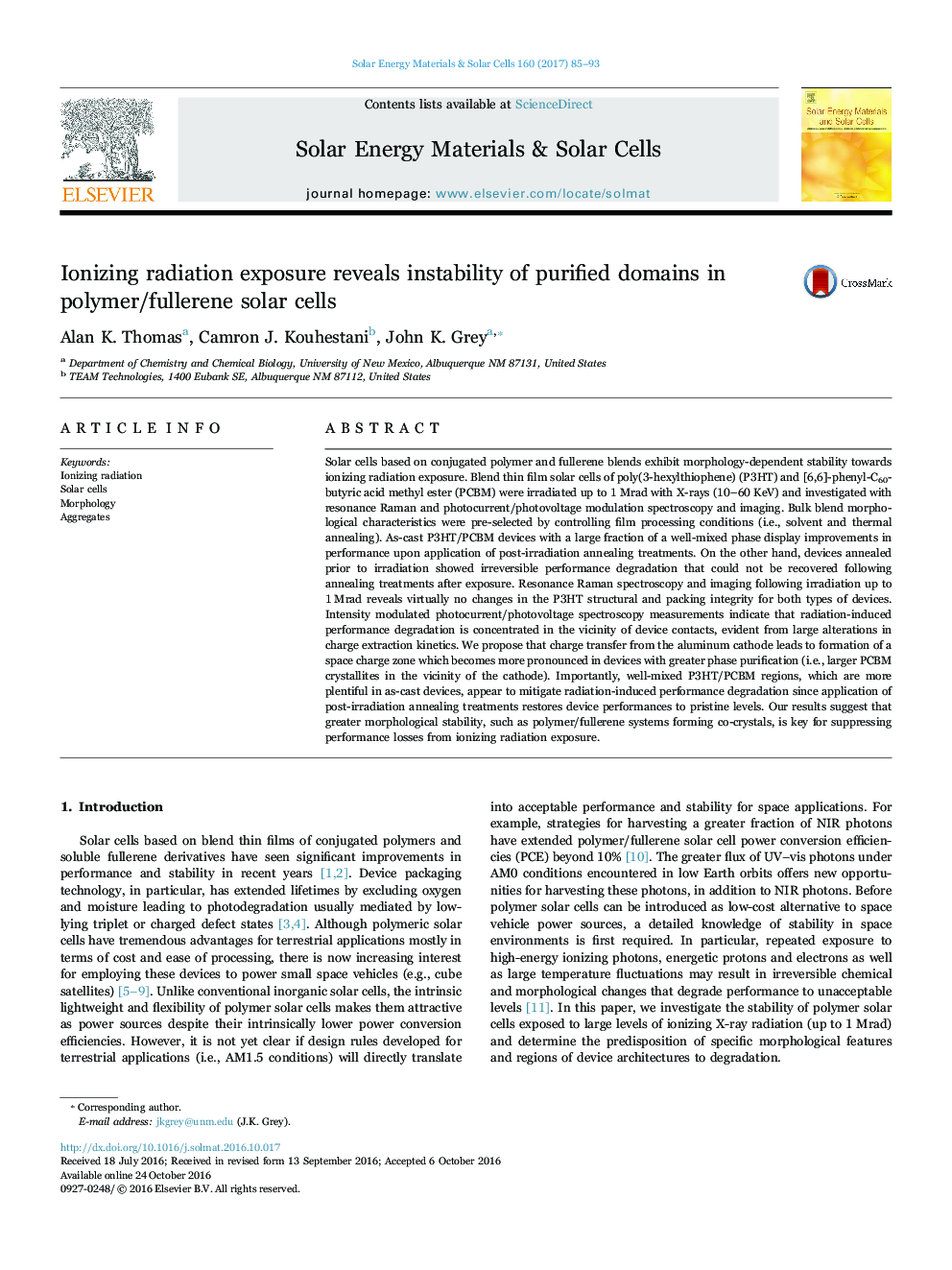| Article ID | Journal | Published Year | Pages | File Type |
|---|---|---|---|---|
| 6457310 | Solar Energy Materials and Solar Cells | 2017 | 9 Pages |
â¢Polymer solar cell performance degradation by ionizing radiation is morphology-dependent.â¢Solar cells with a larger fraction of purified domains display irreversible degradation.â¢Irradiation induces charge extraction barriers at the cathode region.â¢Well-mixed polymer blends with stable morphologies can better withstand ionizing radiation.
Solar cells based on conjugated polymer and fullerene blends exhibit morphology-dependent stability towards ionizing radiation exposure. Blend thin film solar cells of poly(3-hexylthiophene) (P3HT) and [6,6]-phenyl-C60-butyric acid methyl ester (PCBM) were irradiated up to 1Â Mrad with X-rays (10-60Â KeV) and investigated with resonance Raman and photocurrent/photovoltage modulation spectroscopy and imaging. Bulk blend morphological characteristics were pre-selected by controlling film processing conditions (i.e., solvent and thermal annealing). As-cast P3HT/PCBM devices with a large fraction of a well-mixed phase display improvements in performance upon application of post-irradiation annealing treatments. On the other hand, devices annealed prior to irradiation showed irreversible performance degradation that could not be recovered following annealing treatments after exposure. Resonance Raman spectroscopy and imaging following irradiation up to 1Â Mrad reveals virtually no changes in the P3HT structural and packing integrity for both types of devices. Intensity modulated photocurrent/photovoltage spectroscopy measurements indicate that radiation-induced performance degradation is concentrated in the vicinity of device contacts, evident from large alterations in charge extraction kinetics. We propose that charge transfer from the aluminum cathode leads to formation of a space charge zone which becomes more pronounced in devices with greater phase purification (i.e., larger PCBM crystallites in the vicinity of the cathode). Importantly, well-mixed P3HT/PCBM regions, which are more plentiful in as-cast devices, appear to mitigate radiation-induced performance degradation since application of post-irradiation annealing treatments restores device performances to pristine levels. Our results suggest that greater morphological stability, such as polymer/fullerene systems forming co-crystals, is key for suppressing performance losses from ionizing radiation exposure.
